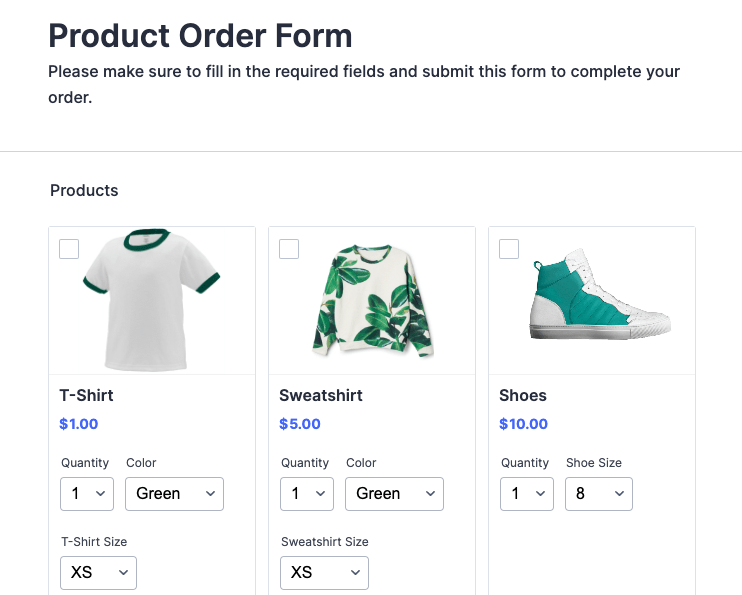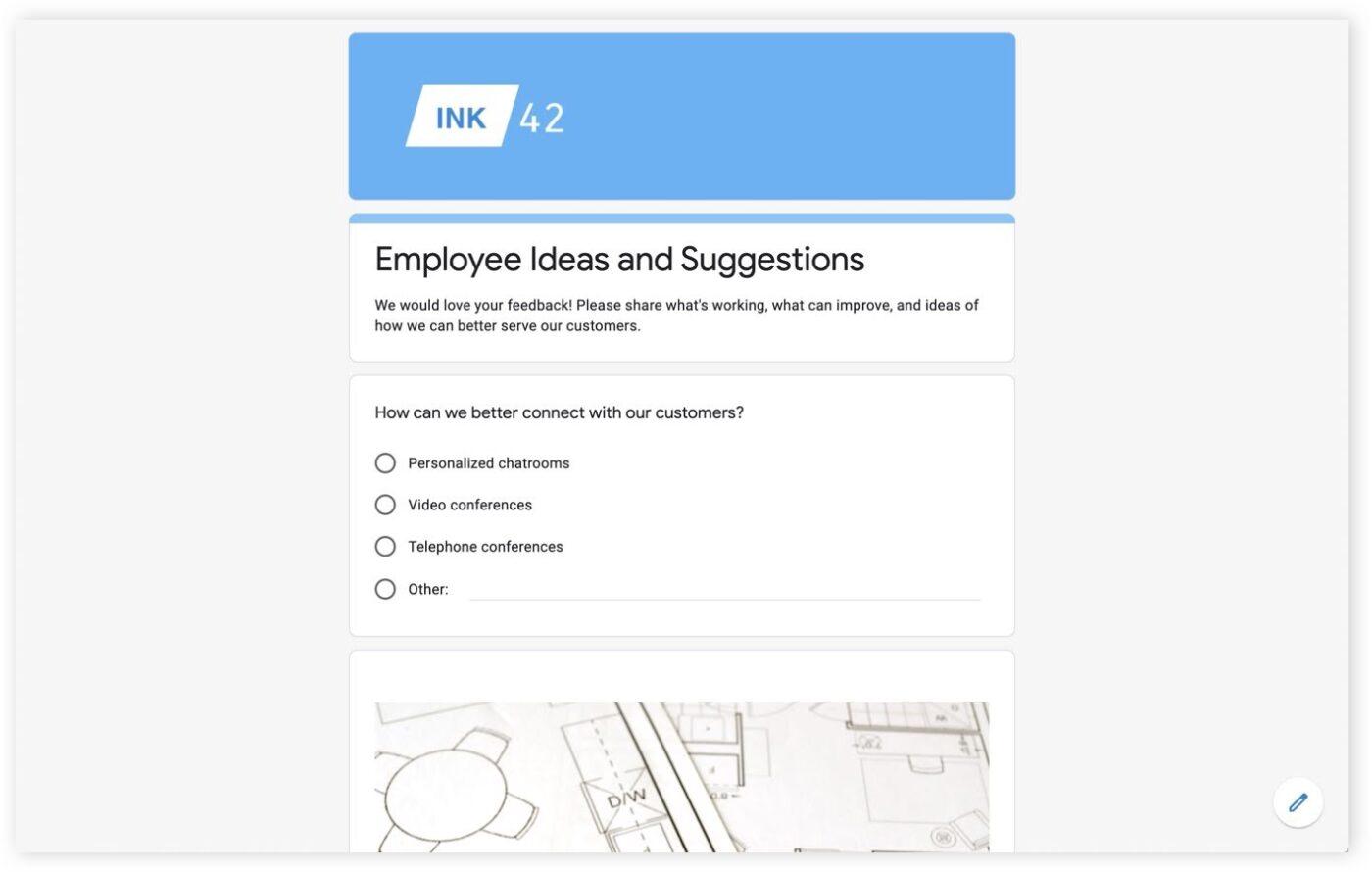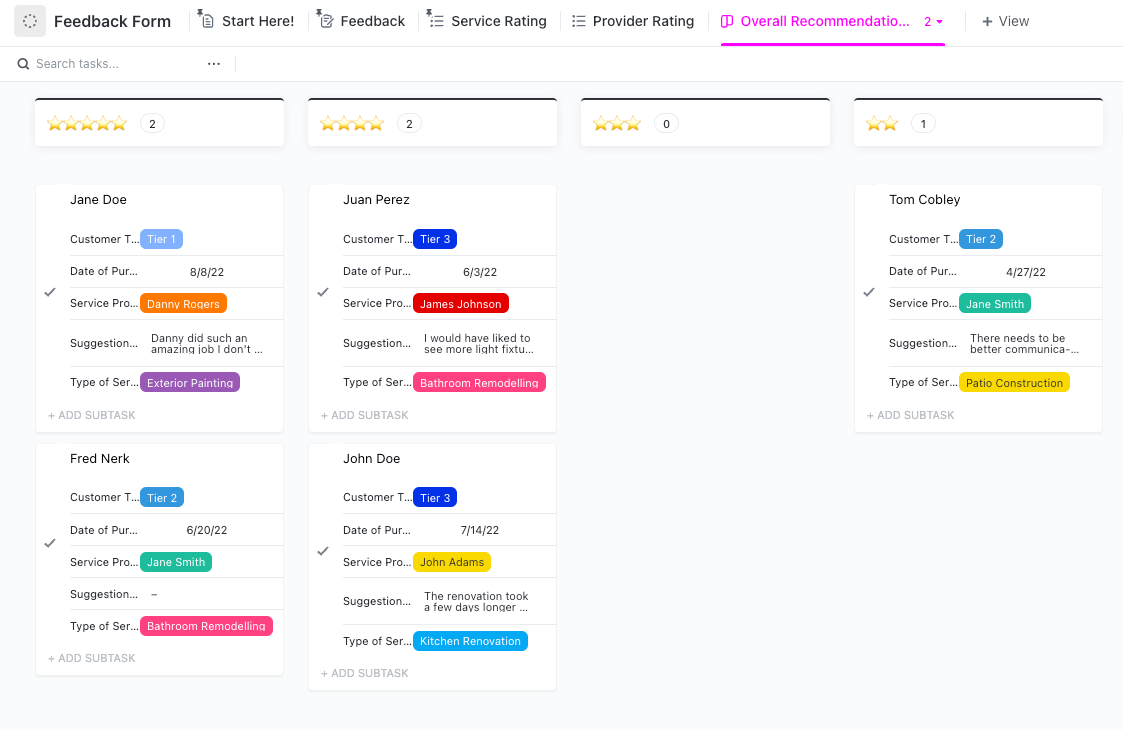Jotform Vs. Google Forms: Which Form Tool is Best?

Sorry, there were no results found for “”
Sorry, there were no results found for “”
Sorry, there were no results found for “”
Businesses rely on data to make decisions about the trajectory of their company. Forms and surveys are some of the best business tools for collecting data from customers, partners, employees, and many other sources.
If you’re looking for form builder software that makes it easy for your team to create forms and gather information using them, Jotform and Google Forms are two popular options. Both are leading online form and survey tools, but there are plenty of differences between the two.
Let’s take a deep dive into the features and pricing of Jotform vs. Google Forms to help you decide which fits the needs of you and your team better.

Jotform is a well-known online form builder that is both powerful and feature-heavy but also fairly simple to use. Jotform also integrates with a huge number of business tools, which makes it easy for businesses to quickly transfer the data they collect with Jotform to software that allows them to analyze the data collected through online forms.
Jotform also boasts excellent security and compliance features, which is very important when you are collecting potentially sensitive data from business partners.
Jotform is chock-full of features, both basic and highly advanced. Best of all, the interface is very user-friendly, which makes it easy to find and use all of the features that you need to create your business forms.
Let’s take a look at some of the features that set Jotform apart from its competitors.
Jotform stands above most competitors in terms of the ease with which it enables you to build custom forms. You don’t need to know how to code to build anything, but if you do have some CSS experience, you’ll be able to work wonders in Jotform.
The form builder is almost all drag-and-drop, allowing you to simply and quickly add images, widgets, integrations, and even change colors on your form with a couple of clicks.

We already mentioned that Jotform supports many integrations, but its integrations with most of the leading online payment platforms is something that really sets it apart. You can integrate Jotform with Stripe, Paypal, Venmo, Apple Pay, and more to collect payments.
This allows you to create forms that can charge people who complete them. This could come in handy if your business takes reservations or custom orders, for example.
There are literally hundreds of available widgets that you can add to your Jotform forms. For example, there’s a Get Visitor Location widget available that collects location data via IP addresses to give you the ZIP code of the person that is filling out the form.
Other popular widgets include Get Page from URL, SMS Confirmation, QR Codes, Whatsapp Button, and much more.


Google Forms is a popular and completely free form builder that is part of Google Workspace—one of the most popular and most-used business platforms globally. It’s also 100% free to use, so it’s easy to understand why so many people use Forms.
But just like any free tool, Google Forms has its limitations. Still, there are plenty of great features that will satisfy the needs of most users who need to create and share simple business forms.
If you’re taking into consideration the fact that it’s completely free to use, Google Forms is extremely feature rich. It might not have features for power users or large corporations, but there are tons of powerful features and customization options that anyone can use without having to pay anything. With Google Forms, you can create unlimited forms for no cost at all.
Google Forms enables you to ask several types of questions, which allows you to make your forms interactive. You can set your form to collect short answers where the respondents are given just one line to record their responses.
You can also set up paragraph-type questions that allow users to give in-depth responses. There’s also a checkbox question type, a file upload question type (which is great for HR teams collecting resumes), and many more.
Google Forms also includes conditional logic, which allows your forms to change and serve different questions based on the user’s prior response.

Educators love using Google Forms because it’s one of the best free tools for easily creating quizzes and sharing them with their students. You can even assign point values to every question to make quiz grading completely automatic.
Automatic grading saves educators tons of time and allows students to get the results of their quizzes back instantly.
No matter what form tool you are using, you’re probably going to end up transferring the collected data to Google Sheets or another Microsoft Excel equivalent in order to create reports and analyze the data you’ve collected. Since it’s part of the same platform, integrating your Google form with a Google Sheet, Google Analytics, and other popular Google document types and apps is fast and frictionless.
Google Forms is also able to automatically create report graphs and charts, allowing you to quickly visualize and communicate the results of surveys/campaigns with stakeholders.

While both are excellent form creation tools, the differences between Jotform and Google Forms are what you would expect them to be. Since Google Forms is completely free, it’s not as robust. However, it’s incredibly simple to use.
You need to pay for the features that set Jotform apart from Google Forms. But if you are paying for a premium account, Jotform is much more flexible, robust, and customizable than Google Forms.
Let’s look at some of the key features that both tools excel at and see how they differ.
Both Google Forms and Jotform handle your data very easily. The reporting options in Google Forms are simpler to use. There are three default reports, and if you need to do further calculations and create a more detailed and specific report, your best bet is to send the data over to Google Sheets and perform your calculations there.
Jotform is a bit less intuitive, but once you learn how to use it, you can do a lot more with it. Jotform has a tool called “Tables” that puts the data into spreadsheet format. If you want to see individual responses, you have to go to the “Inbox.” You also have separate Form Analytics tools that give you great insights into the people who have provided responses.
So Jotform offers more options and core features, but there’s also a significantly higher learning curve that comes with it.

As a free tool, Google Forms doesn’t offer a lot of form templates. Jotform, on the other hand, offers thousands. If you want templates to help you get started on your forms, and you’re looking for a lot of options to play around with, Jotform is the way to go.
Even when customized a bit, most of the templates that Google Forms offers end up looking very similar. With Google Forms templates, you don’t have the option to really customize your forms and make them coincide with the visual identity of your brand.
In Jotform, if the person working on creating forms has a bit of coding and design experience, they can completely customize every single aspect of the form. Jotform also offers hundreds of paid and free themes that you can use to customize the thousands of templates that they provide.

Both Jotform and Google Forms are really good for teams that need to collaborate on forms. You can assign forms to other teammates in a number of ways, including via shareable links, email invitations, and social media.
Jotform also enables you to download your form as a PDF. Another cool feature in Jotform is that you’re able to include automated reminders via email that are sent out to team members that haven’t filled out a form that was assigned to them.
While there isn’t much discussion about Jotform and Google Forms on Reddit, most users agree that Jotform is the better option if your team needs a more flexible and expansive tool for creating forms:
“If you want more than 10 questions, I would recommend Jotform. Jotform also has a free setting where you can integrate with Slack so that you get a Slack message every time someone submits the Jotform, and the Slack message can also show you the submitted information from the Jotform if you set it up that way.”
When asked about an alternative to Google Forms, another user recommended Jotform, stating that the free version was still better than Google Forms:
“You can use Jotform…way better than Google Forms! I used it in the past (the free version) and I was really impressed by its features.”
Jotform and Google Forms are great, but what if form creation was just the tip of the iceberg? That’s exactly what you get with ClickUp—excellent form creation features wrapped into an all-in-one productivity platform with advanced features for project management.
ClickUp’s features go way beyond the scope of online form builders. It’s a productivity and project management tool that anyone can use for a vast variety of purposes. When combining form creation with all of the other features ClickUp boasts, ClickUp can take your form and survey creation to an entirely new level.
Let’s take a look at some of the key ClickUp features that make it a serious alternative for both Jotform and Google Forms to consider.

Much like Jotform, ClickUp’s Form view feature enables you to easily create perfect forms by dragging and dropping various elements. You can also click on the title of any field and easily rename it.
Unlike Google Forms, ClickUp allows you to include custom branding in your forms. You can pick a theme, change colors, and even make the ClickUp branding disappear from your forms.
Forms created in ClickUp are just as shareable as they are in Jotform and Google Forms. ClickUp also has features for embedding forms into web pages using an HTML code that is automatically created for you. ClickUp also features conditional logic options that enable you to create intricate surveys that ask different questions based on what answers are given.
Responses are also easy to manage in ClickUp. You can send them to other team members for easy collaboration and integrate them into any other project or workflow.
The Template Center also includes hundreds of free templates, including the ClickUp Feedback Form Template to collect customer feedback!

Task management is at the heart of ClickUp. It’s one of the best platforms for teams that want to plan, organize, and collaborate, with endless customization options on any type of project. Because of the immense number of project management tools offered in ClickUp, it’s perfect for small businesses and huge enterprises alike.
Collaboration is a breeze in ClickUp. You can ClickUp Tasks, comment in threads, break down large projects into more manageable subtasks, and much more.

ClickUp makes it easy to automate your everyday, routine tasks and focus more time on meaningful work. It offers many pre-built automations that can be customized based on your team’s exact needs.
You can even automate third-party tools that you want to use with ClickUp. All of ClickUp’s automated workflows work with external apps that integrate with the platform, and the list of popular business tools that can be paired with ClickUp continues to grow every month.
With ClickUp, you get more than just a great way to create forms and share them with your team—you get a centralized, all-in-one productivity hub for all of your work.
Sign up for ClickUp to check out its form creation features and so much more!
© 2025 ClickUp